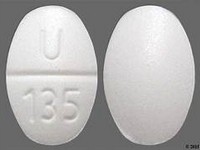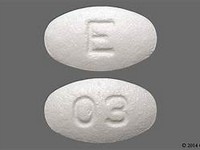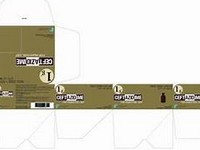Clonidine hydrochloride

Clonidine hydrochloride
CLINICAL USE
Hypertension Migraine Gilles de la Tourette syndrome Menopausal flushingDOSE IN NORMAL RENAL FUNCTION
Hypertension: 50–100 mcg 3 times a day, increasing gradually to 1.2 mg dailySlow IV: 150–300 mcg; maximum 750 mcg in 24 hoursMigraine, menopausal flushing, Gilles de la Tourette syndrome: 50–75 mcg twice dailyPHARMACOKINETICS
DOSE IN RENAL IMPAIRMENT
GFR (mL/MIN)
DOSE IN PATIENTS UNDERGOING RENAL REPLACEMENT THERAPIES
IMPORTANT DRUG INTERACTIONS
Potentially hazardous interactions with other drugsAntidepressants: tricyclics antagonise hypotensive effect and also increase risk of hypertension on clonidine withdrawal; increased hypotensive effect with MAOIsBeta-adrenoreceptor antagonists: increased risk of hypertension on withdrawalCiclosporin: may increase ciclosporin levelsSympathomimetics: possibly increased risk of hypertension with adrenaline and noradrenaline; serious adverse effects reported with methylphenidateADMINISTRATION
Reconstition
–Route
Oral, IVRate of Administration
Slow IV injectionComments
Minimum volume for infusion 6–50 mcg/ mL in sodium chloride 0.9% or glucose 5% (UK Critical Care Group, Minimum Infusion Volumes for fluid restricted critically ill patients, 3rd Edition, 2006)OTHER INFORMATION
Use in renal impairment: clonidine plasma concentrations for a given dose are 2–3 times higher in patients with severe renal impairment; however, blood pressure control appears satisfactory and adverse effects are not increasedClonidine withdrawal: rebound hypertension if drug is abruptly withdrawnTricyclic antidepressants may decrease efficacy
See how to identify renal failure stages according to GFR calculation
See how to diagnose irreversible renal disease
Home








